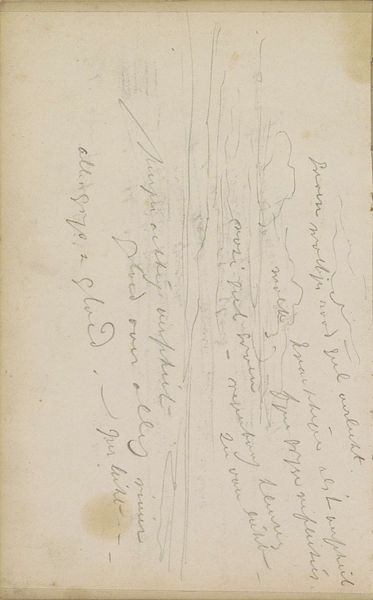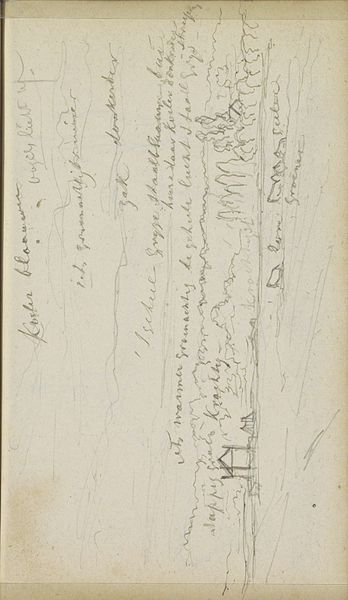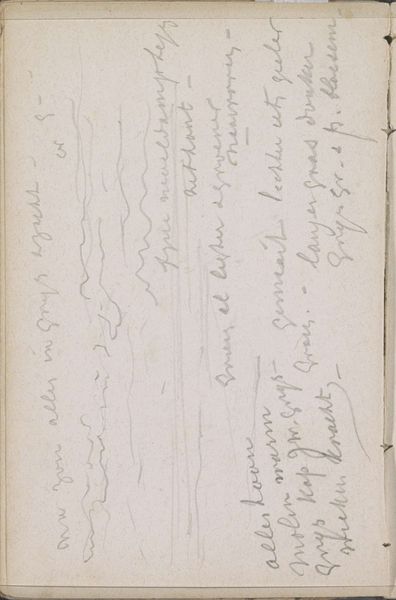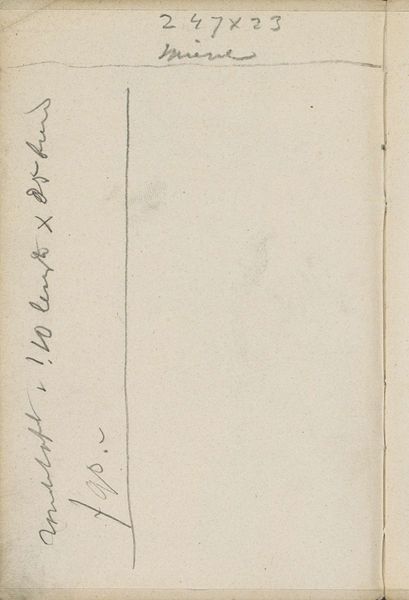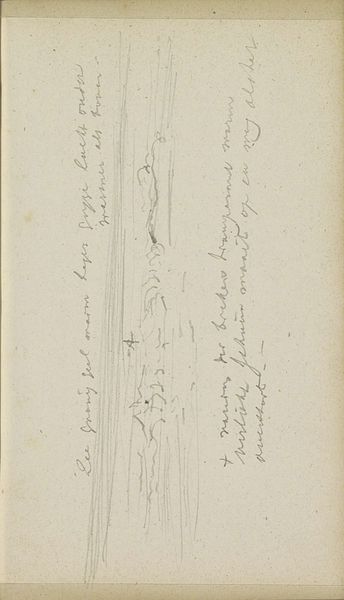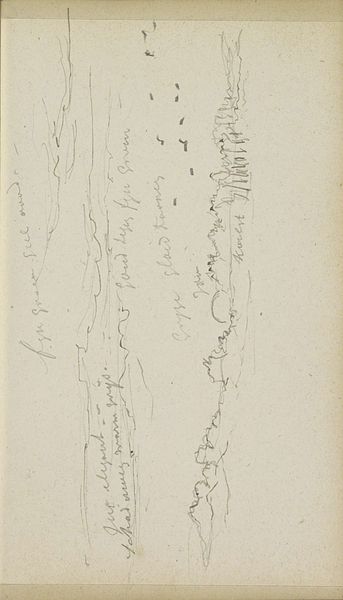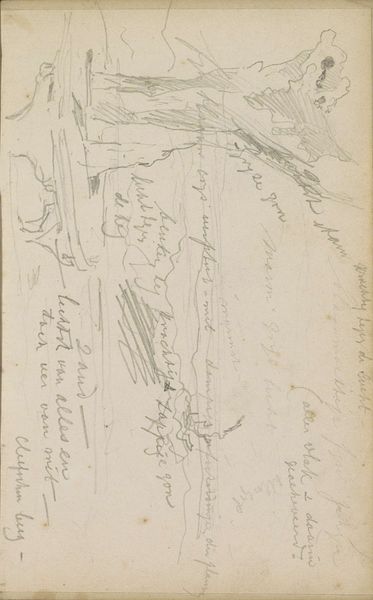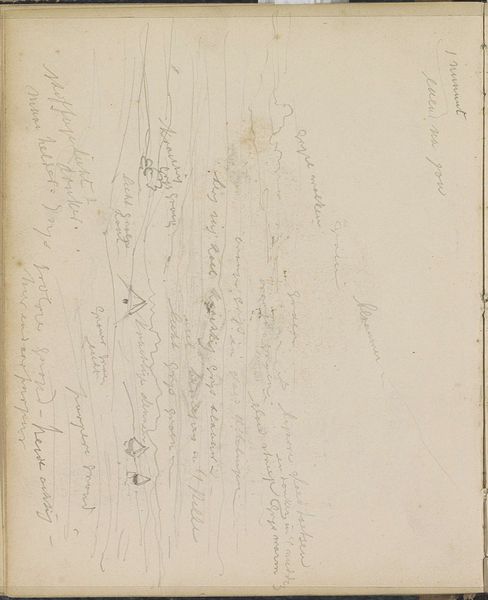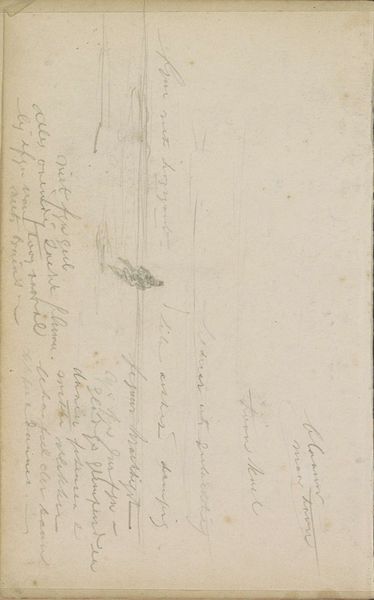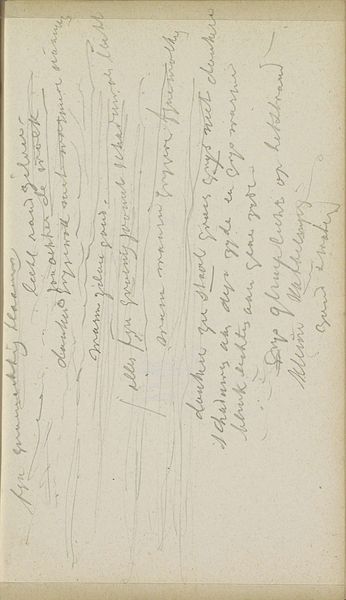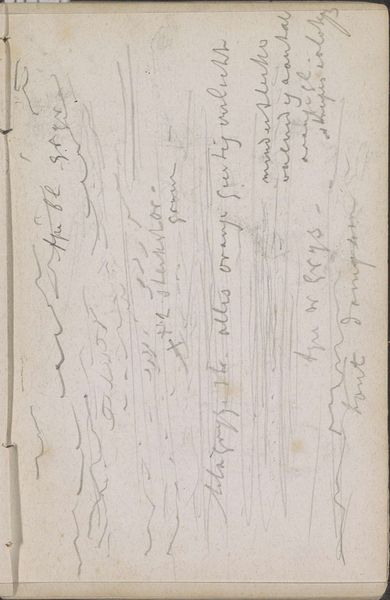
drawing, paper, ink, pencil
#
drawing
#
pen sketch
#
landscape
#
paper
#
ink
#
plant
#
pencil
#
realism
Copyright: Rijks Museum: Open Domain
Editor: So, this pen and ink drawing, "Oever van een rivier," or "Riverbank," is by Johannes Tavenraat, made sometime after 1854. It's interesting, it almost looks like a page ripped from a notebook with these scribbled notes and quick sketch of some foliage...what catches your eye? Curator: Well, consider the broader context of 19th-century Dutch landscape art. Artists were increasingly interested in capturing the *experience* of nature, not just idealized versions of it. These quick sketches became vital. Editor: You mean like preliminary studies? Curator: More than that. Think about the rising middle class in the Netherlands during this period. They are experiencing growing industrialization, yet idealize the Dutch countryside. This type of sketch is appealing as it evokes the idea of authenticity as the notes and the sketch become inseparable. The 'truthfulness' in art that becomes so important for this rising class, becomes coded as things that resist perfection like the sketch medium with spontaneous strokes. Now, is this piece simply a casual sketch, or something more deliberate about capturing that authenticity? Editor: I see. Maybe the "raw" feeling is intentional... almost performative. It's showing, rather than just telling, the 'truth' of that location. It's trying to say, "This is what I *saw* and *felt*." Curator: Exactly! The notes reinforce that sense of immediacy and suggest something that the artist sought to capture during its execution. This challenges the notion of the artist as detached and only interested in the perfectly curated imagery that audiences expected in painting and sculpture, allowing it to stand on its own. Editor: This totally changes how I look at it! Thanks for pointing out how context can reshape your understanding of art. Curator: And you made me consider the art historical politics in the details. Thanks for your great initial reading of the image as well!
Comments
No comments
Be the first to comment and join the conversation on the ultimate creative platform.
